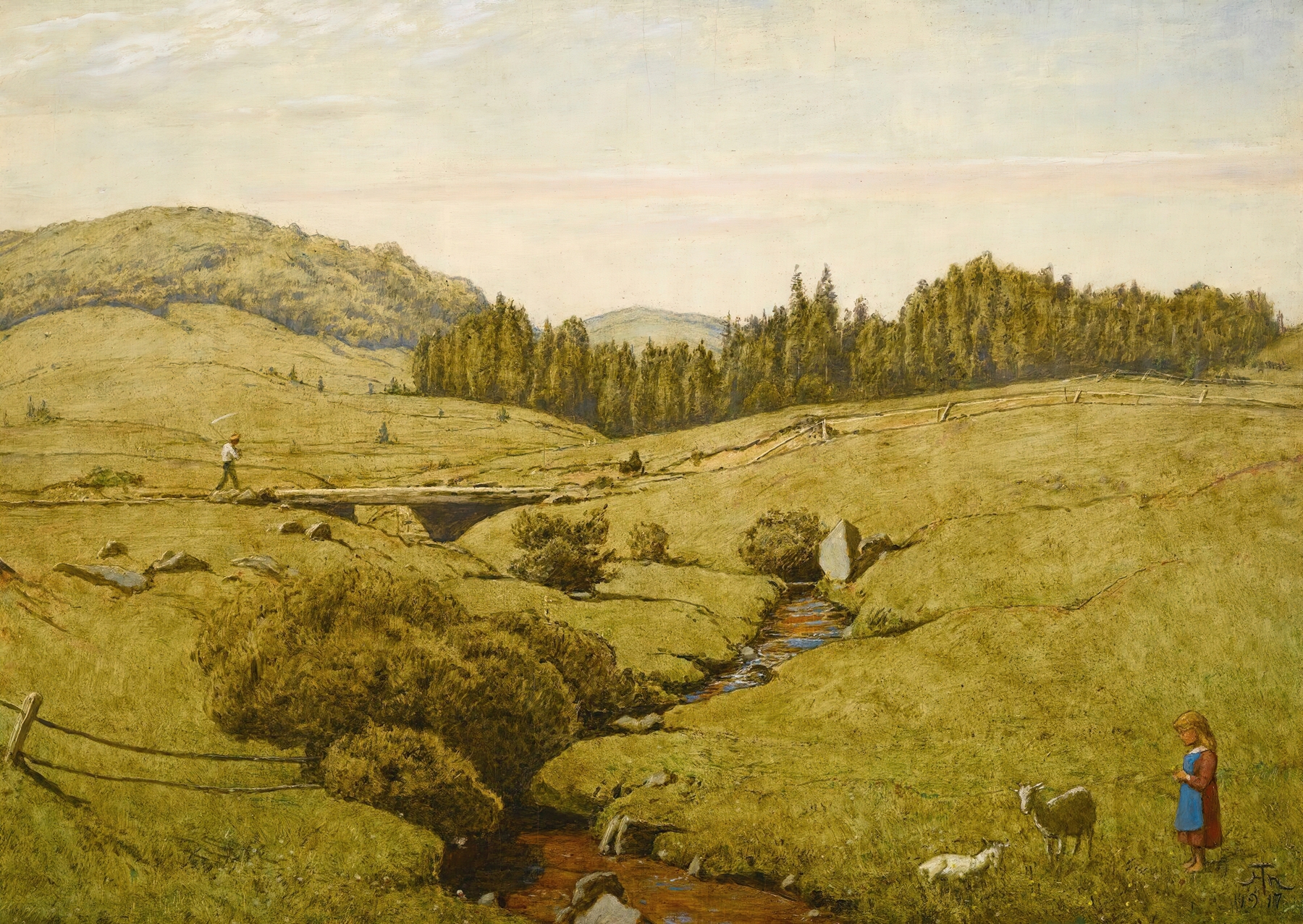
“Schwarzwaldlandschaft” (1917) by Hans Thoma
The piece of art that I chose is an oil painting by German artist Hans Thoma called Schwarzwaldlandschaft, or “Black Forest Landscape.” It was painted at the beginning of the 20th century, when the colorful Fauvism style was most popular. It caught my eye because of its simplicity at first glance, but complexity as you notice each careful detail. Thoma created many similar portraits during his time alive, mainly painting natural landscapes and scenes in his home region of the German Black Forest. Born in Bernau, he was completely surrounded in his early life by the rolling hills, mountains, forests, and lakes that had entranced other artists, foresters, and wanderers of Germany for centuries.
His contemporary, romantic style had a unique perspective from his poor, rural upbringing, allowing him to depict scenes of daily life that were realistic to those in the region and that felt like a blink of a real scene in “simple” life. The nostalgia that his works bring, like this one, remind me of the contentment one can find in the slower pace of life. Sprinkled through the painting are small scenes of human-nature interaction. This includes a little girl standing by two small sheep resting by a creek, a man crossing a bridge carrying a scythe to harvest some type of crop, and some wooden fencing. Thoma is known for his local-based palette, bringing in the real colors of the flowers, grasses, and streams that covered the landscape around him in the BlacK Forest Region.
His work is unique because it romanticized the wilderness of Germany in a realistic way by not exaggerating or idealizing what the perfect scenery would be or always picking the most breathtaking views to paint. He chose scenes that many might find mundane and uninteresting without his delicate oil work and observational eye. Coming from a poor upbringing, he was able to understand and convey scenes of fulfillment in life without luxury, wealth, or class. He painted simple scenes of looking out the window towards a few trees, or the woods on a wintery day, often with ‘peasants’ as the main figures. In Schwarzwaldlandschaft, the same pigmented blue and orange tones on the little girls clothes can be seen reflecting in the creek. The man walking with a scythe also has clothes than seem to blend with a scene. While the people are clearly civilized and using the resources of the environment around them, they seem to live in harmony with the space.
Hans Thoma’s style was likely so impactful to Germans (and people around the world) because of its attention to the simple beauties of rural life. He showed the beauty in German scenery and why it’s important to preserve as much nature as possible. Without these gorgeous landscapes to look at and exist amongst, the contentment and connection with nature he and others felt would be entirely lost.
Sources:
Der braune Bach by Hans Thoma. (n.d.). Artvee. Retrieved April 24, 2023, from https://artvee.com/dl/der-braune-bach/
Hans Thoma. (2023, March 27). Wikipedia. https://en.wikipedia.org/wiki/Hans_Thoma
Tutt’Art, Z. B. (n.d.). Hans Thoma | Symbolist painter. Tutt’Art@ | Pittura • Scultura • Poesia • Musica. Retrieved April 24, 2023, from https://www.tuttartpitturasculturapoesiamusica.com/2014/06/Hans-Thoma.html
